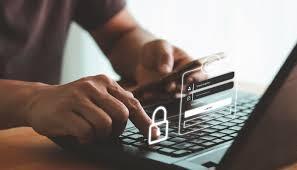Multi-Factor Authentication: Strengthening Access Control

In our increasingly digital world, where sensitive information is stored and accessed online, the need for robust security measures has never been more critical. As cyber threats continue to evolve, traditional username and password combinations are no longer sufficient to safeguard personal and confidential data. This has led to the widespread adoption of Multi-Factor Authentication (MFA), a powerful security mechanism designed to fortify access control and protect against unauthorized access.
Understanding Multi-Factor Authentication:
Multi-Factor Authentication, often referred to as MFA, is a security process that requires users to provide multiple forms of identification before gaining access to a system or account. The purpose of MFA is to add an extra layer of security beyond the traditional username and password. This additional layer typically involves something the user knows (password), something the user has (a security token or code), or something the user is (biometric data).
Two-Factor Authentication (2FA) and Two-Stage Authentication:
Two-Factor Authentication, or 2FA, is a subset of MFA that specifically involves two different authentication factors. This commonly includes something the user knows (password) and something the user has (security code sent to a mobile device or generated by a token). The use of 2FA significantly enhances security by requiring attackers to compromise multiple elements, making unauthorized access more difficult.
Another term often used interchangeably with 2FA is Two-Stage Authentication. While the concepts are similar, Two-Stage Authentication may involve the same types of authentication factors as 2FA but is implemented differently. In a two-stage authentication process, users first enter their username and password (first stage), and then they provide an additional piece of information, such as a security code sent via email or text message (second stage).
The Key Components of Multi-Factor Authentication:
- Something You Know: This is typically a password or PIN that the user has created. It remains the fundamental element in most authentication processes.
- Something You Have: This involves a physical device or token, such as a smartphone, security key, or smart card. The user must possess this item to complete the authentication process.
- Something You Are: This refers to biometric data, such as fingerprints, retinal scans, or facial recognition. Biometrics provide a unique and personal identifier that adds an extra layer of security.
Advantages of Multi-Factor Authentication:
- Enhanced Security: MFA significantly reduces the risk of unauthorized access. Even if one factor is compromised, attackers would still need to overcome additional layers of security.
- Protection Against Credential Theft: With traditional username and password combinations, the theft of login credentials can result in unauthorized access. MFA mitigates this risk by requiring additional forms of verification.
- Compliance Requirements: Many regulatory standards and frameworks mandate the use of multi-factor authentication to protect sensitive information. Adhering to these requirements helps organizations avoid legal and financial consequences.
- User Authentication Customization: MFA allows organizations to tailor their security measures based on the level of sensitivity of the data being accessed. For highly confidential information, additional authentication factors can be implemented.
Implementing Multi-Factor Authentication:
- Choose Appropriate Authentication Factors: Select authentication factors that align with the sensitivity of the data and the usability for end-users. This might involve a combination of passwords, security tokens, and biometric verification.
- User Education and Training: Educate users on the importance of MFA and provide clear instructions on how to use it. Encourage the adoption of secure practices, such as regularly updating passwords and protecting physical tokens.
- Integration with Applications: Ensure that MFA is seamlessly integrated into the applications and systems requiring authentication. This may involve working with service providers and implementing standards like OAuth.
In conclusion, as cyber threats continue to grow in sophistication, the need for robust access control measures becomes increasingly paramount. Multi-Factor Authentication, including Two-Factor Authentication and Two-Stage Authentication, provides a potent solution to enhance security and protect against unauthorized access. By incorporating multiple authentication factors, organizations can create a more resilient defense against cyber threats, safeguarding sensitive information and maintaining the integrity of digital systems.






